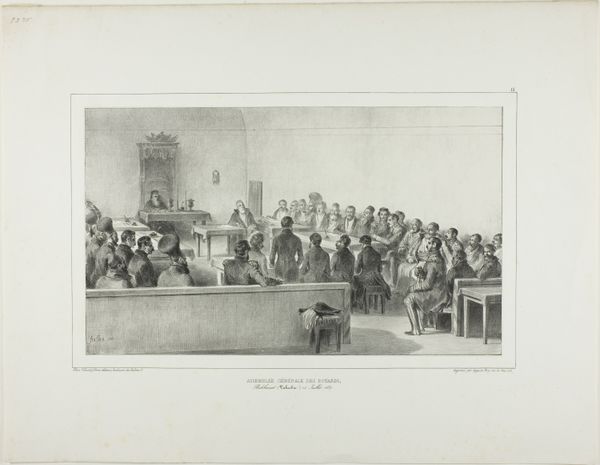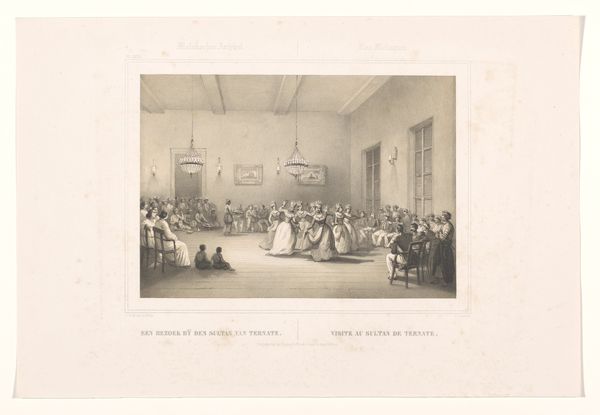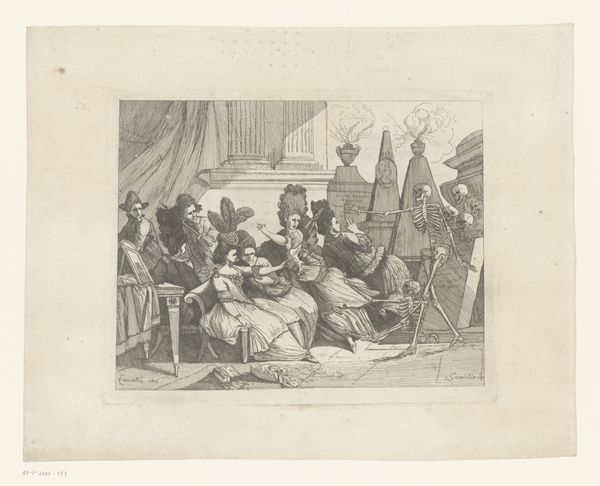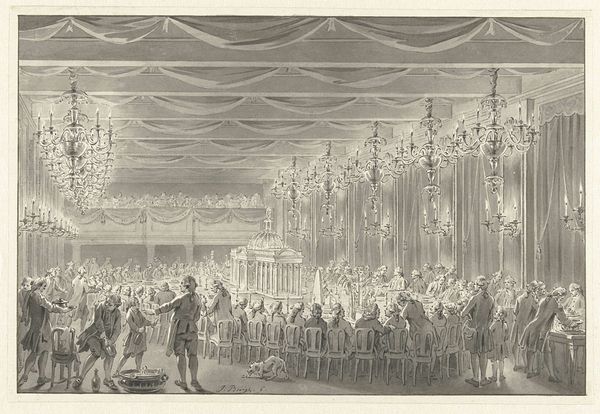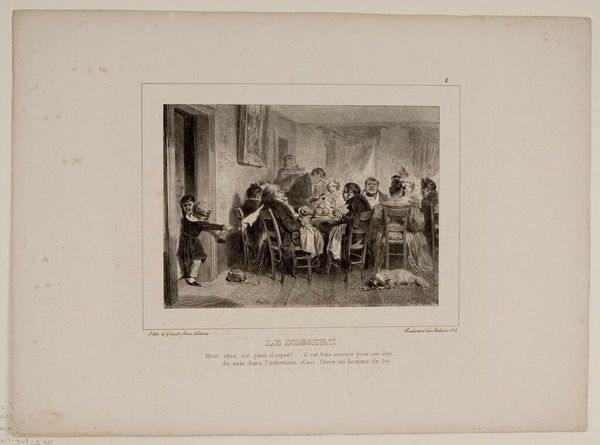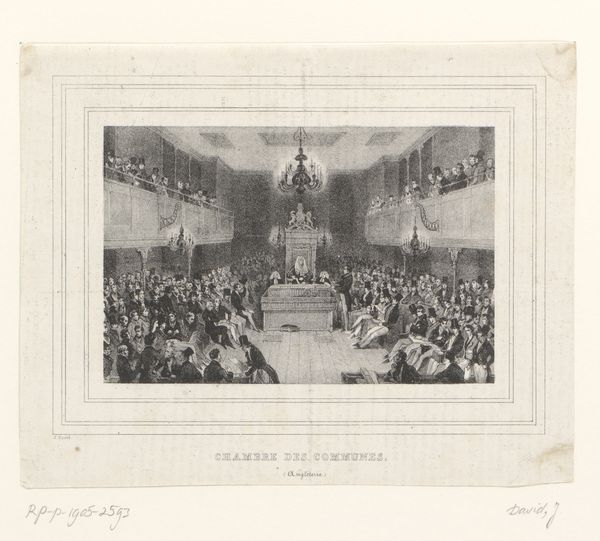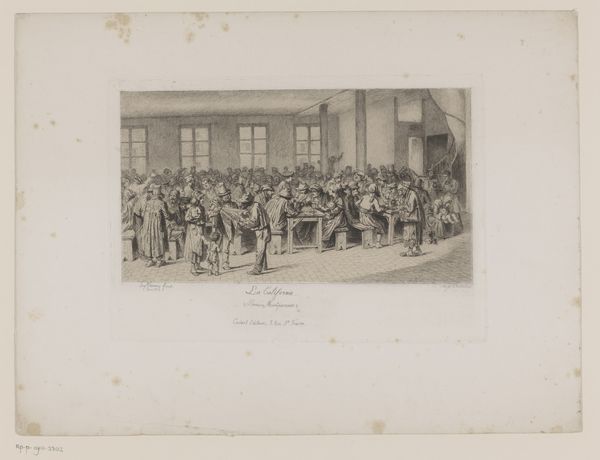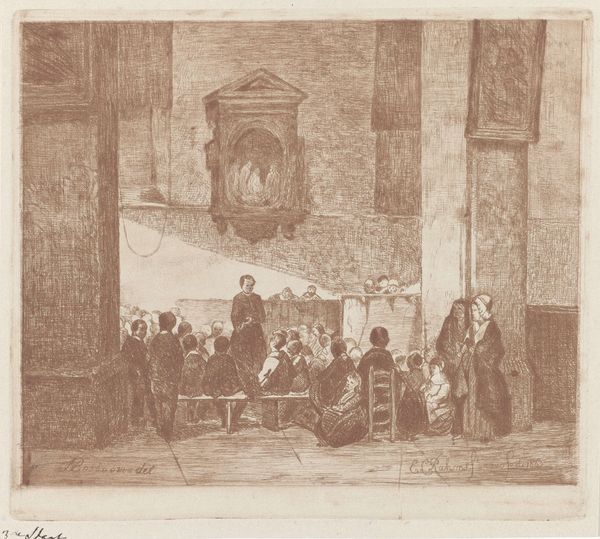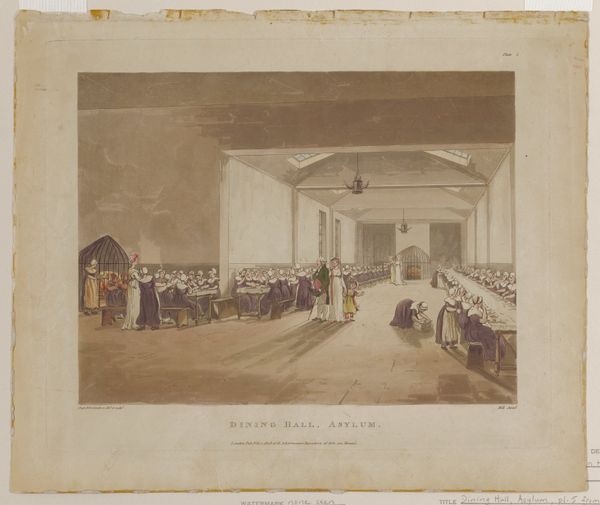
Praying Tartars, Istrimdjami-Kara-sou-Bazar, Crimea, October 19, 1837 1844
0:00
0:00
drawing, lithograph, print, paper
#
drawing
#
lithograph
# print
#
landscape
#
paper
#
orientalism
#
france
#
genre-painting
#
history-painting
Dimensions: 186 × 373 mm (image); 188 × 377 mm (primary support); 275 × 442 mm (secondary support)
Copyright: Public Domain
Editor: This is "Praying Tartars, Istrimdjami-Kara-sou-Bazar, Crimea, October 19, 1837," a lithograph from 1844 by Auguste Raffet. I’m struck by the somber and respectful mood; it feels like peering into a very private moment. What are your thoughts on it? Curator: It’s a fascinating example of Orientalism. Raffet, a French artist, depicts this Crimean Tatar prayer scene not merely as a neutral observation, but through a lens of French, and more broadly, European perceptions of the "Orient." How do you think this external gaze affects the representation of these people? Editor: I hadn't considered it that way. It’s like he’s framing their devotion for a Western audience. Curator: Precisely. Think about the power dynamics inherent in such representation. Who has the authority to represent whom? Raffet is documenting a specific moment but also contributing to the construction of an "Oriental" identity, one laden with colonial implications. Consider how the artist's identity shapes the narrative. Editor: So, it's not just about what is depicted, but who is doing the depicting and why? Curator: Exactly. We must be critically aware of how such images contribute to broader narratives about cultural difference and the complex legacies of colonialism. The lithograph itself becomes a historical document reflecting not only the depicted scene but also the unequal power relations of the era. What do you notice about the artist's approach to lighting and detail, and how might that further influence our understanding? Editor: I notice how detailed the room is and how subdued the light is, almost theatrical. Curator: It adds to the sense of observation, distance. Reflecting on this, what did you learn that you might not have noticed initially? Editor: I see now how even seemingly objective art can be shaped by cultural and historical power dynamics. Curator: Indeed. And appreciating art becomes not just about aesthetics, but a critical engagement with history, identity, and power.
Comments
No comments
Be the first to comment and join the conversation on the ultimate creative platform.
